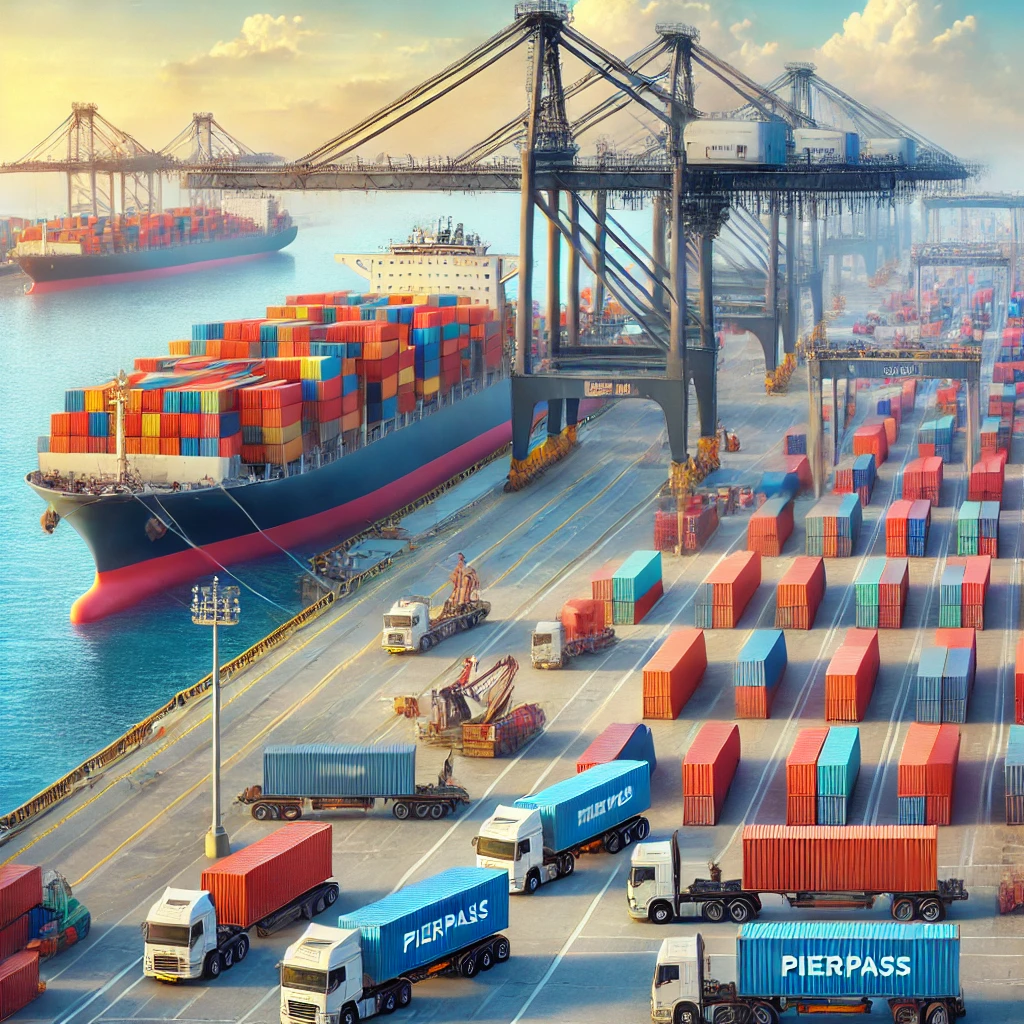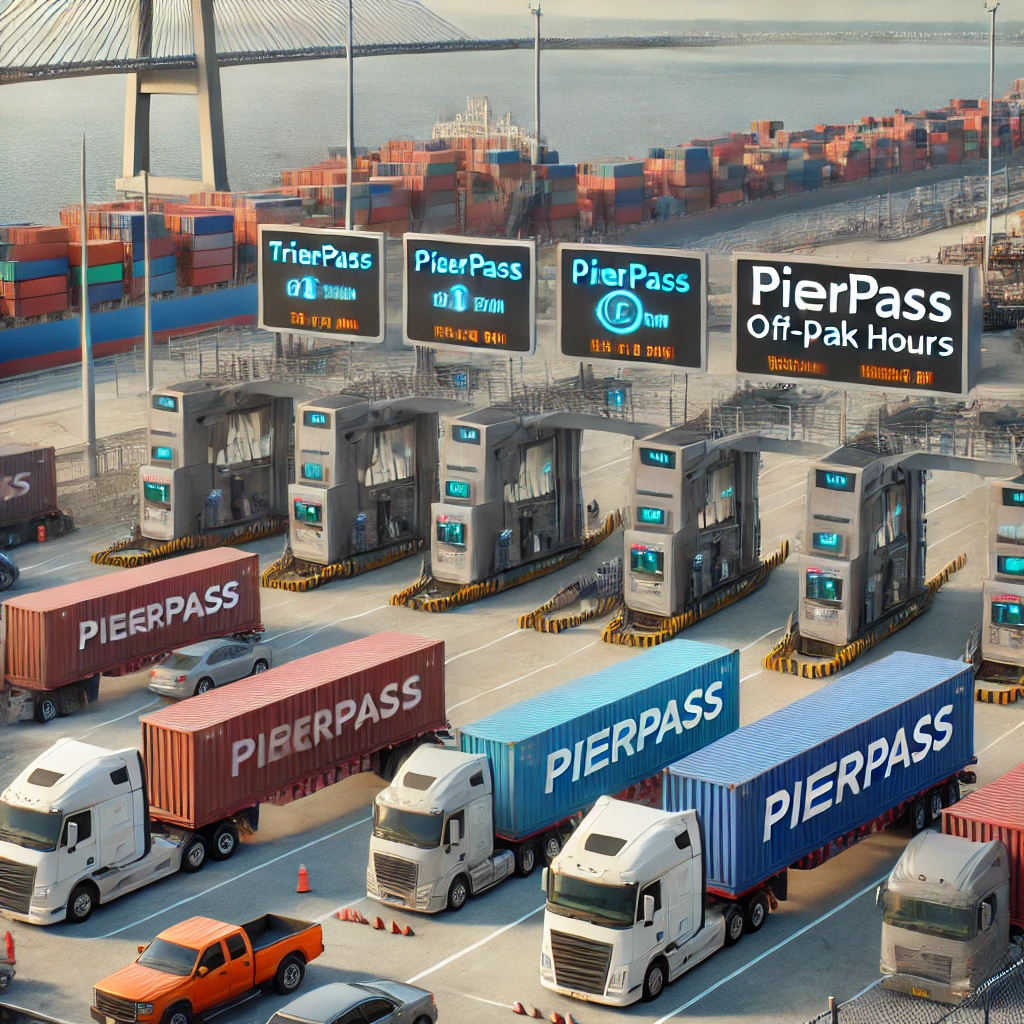An In-Depth Guide to PierPass
PierPass is a logistics initiative designed to reduce congestion, improve efficiency, and enhance security at major U.S. ports, particularly at Los Angeles and Long Beach. Established by the West Coast Marine Terminal Operators Agreement (WCMTOA), PierPass aims to regulate cargo movement, encourage off-peak trucking, and manage port-related traffic issues.

Key Features of PierPass
- Traffic Mitigation Fee (TMF)
- A fee applied to cargo moved during peak hours (Monday–Friday, 3 AM–6 PM).
- Encourages shippers to use off-peak hours for cargo pickup and drop-off.
- Revenue from TMF funds extended terminal operations during nights and weekends.
- OffPeak Program
- Introduced to reduce daytime port congestion by shifting truck traffic to nights and weekends.
- Provides extended operating hours at terminals, improving efficiency and reducing truck wait times.
- Efficiency and Security Enhancements
- Reduces port congestion, leading to lower emissions and faster processing times.
- Enhances security by minimizing bottlenecks and improving tracking of shipments.
How PierPass Works
- Cargo owners pay the Traffic Mitigation Fee (TMF) if they pick up or drop off containers during standard peak hours.
- Shippers who move cargo during off-peak hours (after 6 PM on weekdays or weekends) avoid TMF charges.
- The fees collected are reinvested into expanding port terminal capacity and operational hours.

Benefits of PierPass
- Reduced Port Congestion
- Encourages nighttime truck movement, preventing overcrowding at port terminals.
- Leads to faster turnaround times for shipments.
- Environmental Impact
- Lower emissions due to reduced truck idling and smoother traffic flow.
- Supports sustainability efforts by optimizing fuel consumption.
- Cost Savings for Businesses
- Companies utilizing off-peak hours save on TMF charges.
- Faster processing reduces storage and detention fees.
- Improved Supply Chain Efficiency
- Shorter wait times for trucks and fewer delays in freight movement.
- Increased flexibility for logistics providers and freight forwarders.
Who Benefits from PierPass?
- Importers and exporters looking for faster cargo movement.
- Truckers benefiting from reduced congestion and quicker turnaround.
- Freight forwarders and logistics companies optimizing cargo transportation.
- Port operators ensuring smoother and more efficient operations.

Challenges and Considerations
- Traffic Mitigation Fee (TMF) Costs
- Some businesses may face increased costs if unable to shift operations to off-peak hours.
- Terminal Availability
- Not all terminals may offer off-peak services, requiring coordination with logistics partners.
- Scheduling Adjustments
- Businesses must adapt their supply chain to maximize the benefits of off-peak operations.
How to Optimize Operations with PierPass
- Schedule Deliveries During Off-Peak Hours
- Work with logistics partners to move shipments outside standard peak times.
- Utilize Port Tracking and Scheduling Tools
- Use digital platforms to monitor TMF fees and identify optimal delivery windows.
- Partner with Freight Forwarders
- Collaborate with experienced logistics providers to streamline cargo movement and reduce costs.

Conclusion
PierPass is a crucial initiative for enhancing port efficiency, reducing congestion, and promoting sustainable freight transportation. By understanding how it works and leveraging off-peak shipping strategies, businesses can reduce costs, improve turnaround times, and optimize their supply chain operations. Whether you’re a trucker, importer, or logistics provider, utilizing PierPass effectively can significantly enhance cargo flow and operational efficiency at major U.S. ports.
